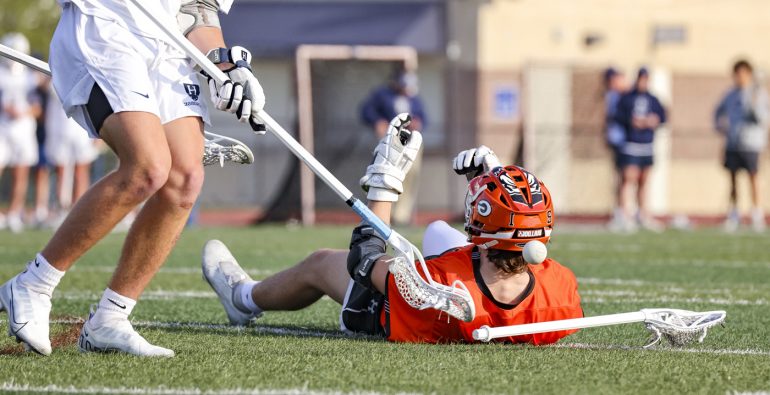Every time they step on the field, lacrosse players risk injuries. From ankle sprains to hamstring pulls, common lacrosse injuries all too often keep players on the sidelines. But, they don’t have to.
Even in the high-speed, full-contact sport of lacrosse, simple stretching and conditioning routines can help players remain in the game.
5 Types of Lacrosse Injuries
Sprains and Strains
Lacrosse is known as the fastest game on two feet for a reason. Players sprint, dodge and cut all game long. This creates a high potential for lacrosse injuries, including sprains and strains. But, the trick to avoiding sports injuries is proper training.
Always remember to stretch before and after each practice, game or workout. In addition, strengthening muscles with weight training exercises will minimize the chances of injury.
ACL Injuries
Knee injuries, such as anterior cruciate ligament (ACL) tears, are the most prevalent lacrosse injuries in both guys and girls. ACL injuries, which can sideline a player for a whole season, may not be preventable but there are ways to decrease risk.
While there is no single exercise to prevent an ACL tear, strengthening and stabilizing the knee is a great start. Leg presses, squats and lunges are suggested exercises for improving the overall health of the knee.
Hamstrings, Quads or Groins
Upper leg injuries, like hamstring, quadriceps or groin pulls, have a tendency to linger all season long. Since many of these lacrosse injuries are caused by a lack of flexibility, comprehensive and consistent stretching is the best method for prevention.
If you do sustain an upper leg injury, the tried-and-true formula of RICE (rest, ice, compression, elevation) is still key to the modern treatment of sports injuries.
Bruises
Flying lacrosse balls, swinging sticks and other hazards result in bruises galore for lacrosse players. If you play enough, bruises are unavoidable, but they can be minimized.
To prevent injury, it is highly recommended that players wear protective gear, including shoulder pads, elbow pads and rib pads, in practices and games. This precaution can prevent bruises caused by opposing players’ checks. If you receive a bruise, treat it as soon as possible with ice or other medication to prevent swelling.
Concussions
Just like any contact sport, head injuries are a concern for players. Players can protect themselves from concussions by always wearing a properly-fitted helmet when on the field. While a helmet can’t entirely prevent a concussion, it can greatly reduce injury risk.
If you believe you have any of these common sports injuries, it is best to seek an assessment from a qualified health professional before returning to play.

